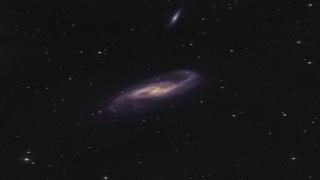Bibcode
Comerón, S.; Knapen, J. H.; Sheth, Kartik; Regan, Michael W.; Hinz, Joannah L.; Gil de Paz, Armando; Menéndez-Delmestre, Karín; Muñoz-Mateos, Juan-Carlos; Seibert, Mark; Kim, Taehyun; Athanassoula, E.; Bosma, Albert; Buta, Ronald J.; Elmegreen, Bruce G.; Ho, Luis C.; Holwerda, Benne W.; Laurikainen, Eija; Salo, Heikki; Schinnerer, Eva
Referencia bibliográfica
The Astrophysical Journal, Volume 729, Issue 1, article id. 18 (2011).
Fecha de publicación:
3
2011
Revista
Número de citas
44
Número de citas referidas
37
Descripción
If thick disks are ubiquitous and a natural product of disk galaxy
formation and/or evolution processes, all undisturbed galaxies that have
evolved during a significant fraction of a Hubble time should have a
thick disk. The late-type spiral galaxy NGC 4244 has been reported as
the only nearby edge-on galaxy without a confirmed thick disk. Using
data from the Spitzer Survey of Stellar Structure in Galaxies
(S4G) we have identified signs of two disk components in this
galaxy. The asymmetries between the light profiles on both sides of the
mid-plane of NGC 4244 can be explained by a combination of the galaxy
not being perfectly edge-on and a certain degree of opacity of the thin
disk. We argue that the subtlety of the thick disk is a consequence of
either a limited secular evolution in NGC 4244, a small fraction of
stellar material in the fragments which built the galaxy, or a high
amount of gaseous accretion after the formation of the galaxy.
Proyectos relacionados

Las Galaxias Espirales: Evolución y Consecuencias
Nuestro grupo pequeño esta bien conocido y respetado internacionalmente por nuestro trabajo inovativo e importante en varios aspectos de la estructura y la evolución de las galaxias espirales cercanas. Usamos principalmente observaciones en varias longitudes de onda, explotando las sinergías que nos permiten responder a las cuestiones más
Johan Hendrik
Knapen Koelstra